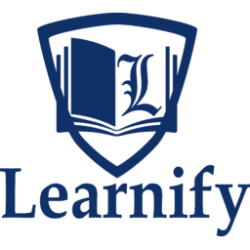ADA Compliance for Workplace Safety Training Course
Introduction
The Americans with Disabilities Act (ADA) requires employers to provide a safe, inclusive, and accessible workplace for individuals with disabilities. This course equips participants with the knowledge and tools to integrate ADA compliance into workplace safety programs. Attendees will explore legal requirements, best practices, and innovative solutions for creating environments that ensure safety and equity for all employees.
Course Objectives
By the end of this course, participants will:
- Understand the core principles of the ADA as it pertains to workplace safety.
- Identify and address potential safety barriers for employees with disabilities.
- Develop accessible safety policies and procedures.
- Learn how to conduct ADA-compliant risk assessments and safety audits.
- Explore innovative technologies and strategies for inclusive workplace design.
- Prepare for future trends and challenges in accessibility and workplace safety.
Who Should Attend?
This course is designed for:
- Health, safety, and environment (HSE) professionals
- Human resource managers and supervisors
- Facility and operations managers
- ADA coordinators and compliance officers
- Workplace designers and ergonomists
- Anyone responsible for workplace accessibility and safety
Advanced 5-Day Course Outline
Day 1: Overview of the ADA and Workplace Safety
Session 1: Introduction to the ADA
- History, purpose, and key provisions of the ADA
- The intersection of the ADA and OSHA regulations
Session 2: Understanding Disabilities in the Workplace
- Categories of disabilities and their implications for workplace safety
- Common barriers faced by employees with disabilities
Session 3: Legal Obligations for Employers
- Reasonable accommodations and undue hardship
- Case studies: Legal precedents in ADA workplace safety compliance
Day 2: Assessing Workplace Accessibility and Safety
Session 1: Conducting ADA-Compliant Safety Audits
- Identifying physical, procedural, and attitudinal barriers
- Tools and methodologies for comprehensive safety audits
Session 2: Risk Assessments for Employees with Disabilities
- Tailoring risk assessments to diverse needs
- Workshop: Creating inclusive safety checklists
Session 3: Emergency Preparedness and Response
- Developing accessible evacuation plans and drills
- Practical session: Simulating emergency scenarios for diverse groups
Day 3: Designing Inclusive Safety Programs
Session 1: Creating ADA-Compliant Safety Policies
- Best practices for drafting and communicating safety policies
- Ensuring policies address both physical and cognitive accessibility
Session 2: Workplace Modifications and Assistive Technologies
- Designing accessible workspaces: Furniture, signage, and pathways
- Overview of assistive technologies for safety and productivity
Session 3: Training and Awareness Programs
- Educating employees on ADA requirements and inclusive practices
- Role-playing activity: Training sessions for diverse teams
Day 4: Implementing and Sustaining Compliance
Session 1: Integrating ADA Compliance into Safety Management Systems
- Aligning ADA requirements with ISO 45001 and other standards
- Using data to monitor and improve accessibility efforts
Session 2: Partnering with External Stakeholders
- Collaborating with disability advocacy organizations and consultants
- Leveraging government resources and funding for workplace modifications
Session 3: Handling Complaints and Non-Compliance Issues
- Developing fair and transparent grievance procedures
- Strategies for resolving disputes and avoiding litigation
Day 5: Future Trends and Innovation in ADA Compliance
Session 1: Emerging Challenges and Technologies
- Adapting to new disability definitions and workforce demographics
- Innovations in smart buildings and wearable safety devices
Session 2: Inclusive Design for Future Workplaces
- Trends in universal design and their impact on workplace safety
- Group activity: Proposing future-ready workplace solutions
Session 3: Final Project: Developing an ADA-Compliant Safety Plan
- Participants work in groups to design a comprehensive safety plan for an inclusive workplace scenario
- Presentations and expert feedback
Conclusion and Next Steps
- Certification of completion
- Access to ADA compliance templates, resources, and tools
- Opportunities for peer networking and mentorship

